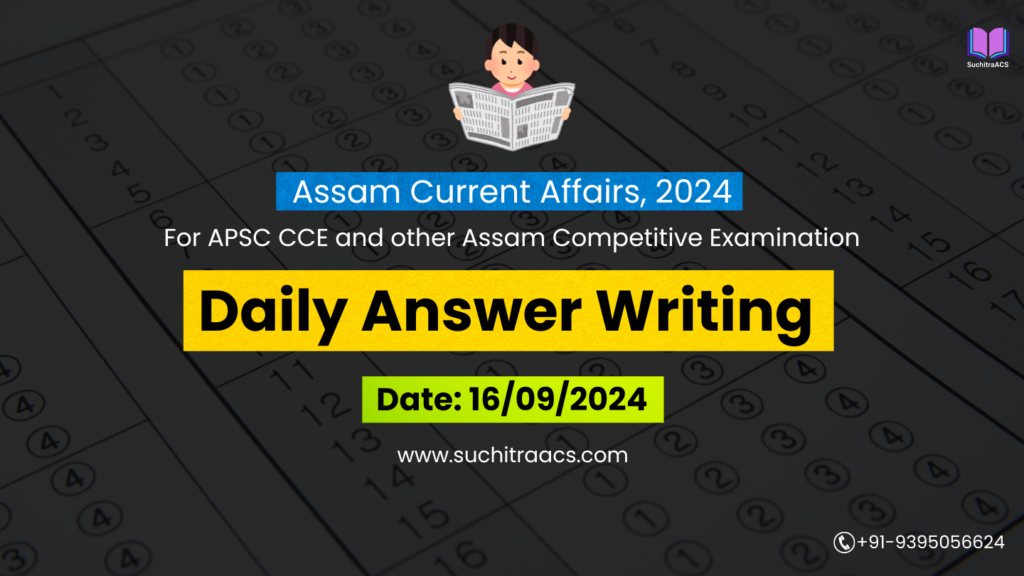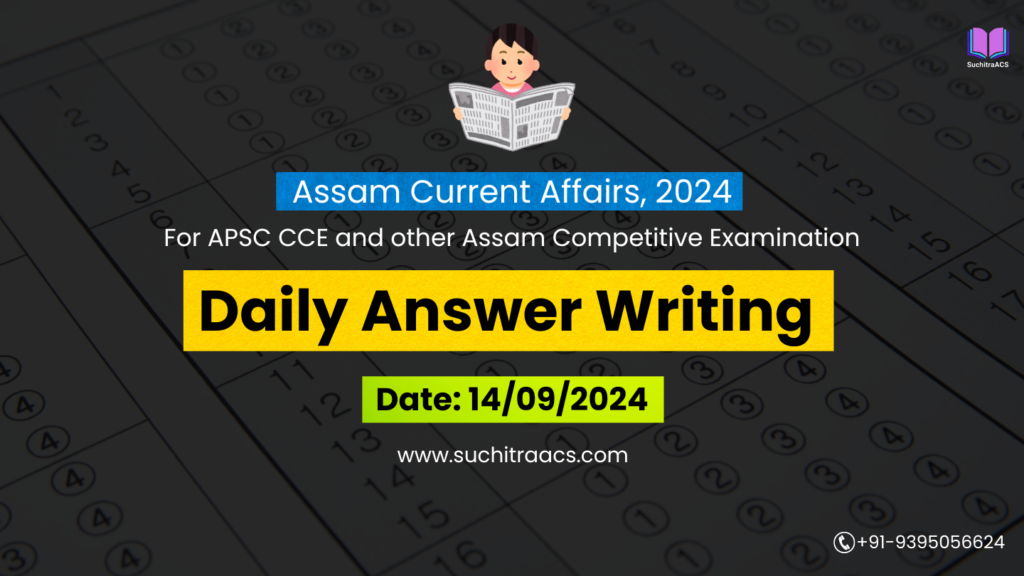APSC Answer Writing (Daily) based on Assam Tribune – 25/06/2025
For APSC CCE and other Assam Competitive examinations aspirants, practicing Daily Answer Writing is vital. This blog covers the most important Main question and its model Answer from the Assam Tribune today (25-06-2025).
📝 Mains Question:
Q. Discuss the significance of declaring Majuli as a Biodiversity Heritage Site (BHS) under the Biological Diversity Act, 2002. What challenges are involved in the conservation of river island ecosystems like Majuli, and how can they be addressed?
📘 Model Answer
Introduction
Majuli, the world’s largest inhabited river island and a cultural hub of neo-Vaishnavism, has been proposed by the Assam State Biodiversity Board (ASBB) as Assam’s first Biodiversity Heritage Site (BHS) under Section 37 of the Biological Diversity Act, 2002. Recognizing Majuli as a BHS is both an ecological and cultural imperative in the face of mounting environmental pressures.
Significance of BHS Status for Majuli
| Domain | Contribution |
| 🌿 Ecological | Protects wetland biodiversity, fish species, migratory birds, and rare flora |
| 🧘♂️ Cultural | Preserves traditional eco-sensitive practices of Vaishnavite Satras |
| 🌾 Economic | Supports sustainable livelihoods like fishing, handloom, and ecotourism |
| 🌊 Hydrological | Wetlands and floodplains act as natural buffers during monsoons |
| 🧑🎓 Educational | Becomes a living lab for biodiversity education and citizen science |
Why Majuli Is Ecologically Unique
- Home to over 100+ species of fish, orchids, and aquatic vegetation
- Lies in the Brahmaputra floodplain, highly dynamic and fertile
- Key stopover for Central Asian migratory birds
- Known for organic rice varieties and wetland-based agriculture
- Site of community conservation traditions, e.g., xatras planting sacred groves
Challenges in Conserving River Island Ecosystems
| Challenge | Explanation |
| 🌊 Erosion by Brahmaputra | Majuli has lost over 30% landmass in 100 years |
| 🚧 Infrastructure Pressure | Roads, embankments disrupt wetland hydrology |
| 🧴 Tourism-linked Pollution | Plastic, sewage, and over-tourism near Satras |
| 🌱 Invasive Species | Water hyacinth and alien fishes disrupting wetland ecosystems |
| 📋 Poor Policy Enforcement | Weak BMC presence and lack of coordination among agencies |
Legal and Policy Framework
- Biological Diversity Act, 2002 – BHS declaration by state governments
- Wetland Rules, 2017 – Legal protection for notified wetlands
- State Biodiversity Board & BMCs – Key implementing agencies
- Eco-sensitive Zone (ESZ) Notification – Can regulate tourism and construction
- National Biodiversity Action Plan (NBAP) – India’s roadmap to protect key ecosystems
Way Forward
| Solution Area | Strategic Action |
| 📜 BHS Notification Process | Complete Gram Sabha consultation and GIS demarcation |
| 👥 Strengthen BMCs | Train locals to prepare People’s Biodiversity Registers (PBRs) |
| 🚫 Regulate Tourism | Eco-certification, waste control, and visitor caps |
| 🌊 Flood Management | Use soft engineering and wetland buffers over embankments |
| 📚 Eco-education | Include Satras and Majuli’s biodiversity in school curriculum |
Conclusion
Declaring Majuli as a Biodiversity Heritage Site is not just symbolic—it is a strategic step to conserve a fragile river island that embodies Assam’s ecological richness and cultural depth. If implemented with community participation and strong governance, Majuli can become a model for integrated riverine conservation in India.
✨ Looking for top-quality APSC Mains Guidance with Personalised Mentor?

🔔 Join Our WhatsApp Study Group!
For exclusive access to premium quality content, including study materials, current affairs, MCQs, and model answers for APSC CCE and other Assam competitive exams.
Click here to join: SuchitraACS Study WhatsApp Group
📚 Want to know more about SuchitraACS’s most affordable courses?
Click here to know more: SuchitraACS Courses for APSC CCE and Assam Competitive Examinations




